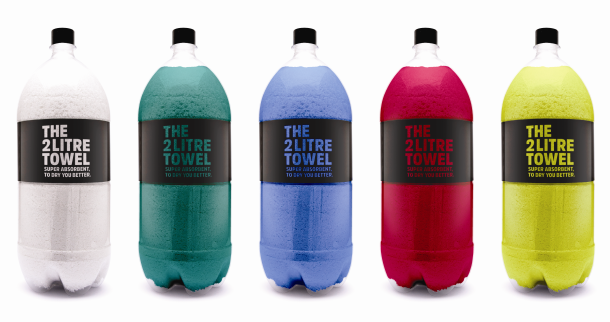We’ve known since the '60s that putting collectables in packaging can make products sell faster.
Three generations of Aussie kids grew up collecting Weet-Bix cards, after all.
We’ve known too that individualised ways of using packaging can make a mark on culture. A Grolsch bottle collection became the hallmark of flat-sharing in the '70s.
Now, there’s a new opportunity for packaging. It’s to be, in itself, the medium by which people connect to brands.
We’re talking about advertising.
The thinking of Grey Group Australia’s chief creative officer, Michael Knox, is becoming typical. “The work that’s going on right now is more interesting that it has ever been,” he says.
“The type of work the industry stands and applauds comes in all shapes and sizes. It has a lot more to it, it engages deeper and is more useful than the stuff we once produced. Australia is very ready for it, the media landscape is demanding it. At Grey, we talk a lot about intent and purpose. Work that doesn’t only rely on its personality. Ideas that grow in the overlap between experience, PR and product. We’re certainly not bemoaning traditional advertising but I will say, the stuff that we’re producing right now is more persuasive. It’s going further and it's lasting longer. We’ve leapt from 360 degrees to 365 days.”
ABSORB THIS IDEA
In mid-November 2015, ad agency M&C Saatchi Australia solved the business problem of Australia’s last cotton mill standing. Australian Weaving was fighting a price war against cheap imports it could not win. The agency solved that problem for its client by addressing the cheap towel dilemma of everyday Australians – absorbency. It highlighted the absorbency of Australian Weaving's super-premium towel through its packaging. The 2 Litre Towel absorbs two litres of water. And the advertising part? The 2 Litre Towel is packaged inside a PET soft drink bottle. And sold from a retail fridge POS display.

DIGITAL DRIVES PERSONAL TOUCH
This is all-new and exciting for business, agencies, product makers and packagers. But the advent of digital printing has allowed packaging to add two other important elements to what it can be. It can be individualised.
Ogilvy Australia’s Share a Coke campaign went five times further than 365 days, and there’s still talk that it might go further.
The campaign began simply enough. In 2011, Coca-Cola bottles in Australia were personalised with 150 of our most popular names. Sales went up 7% that year. It became a global phenomenon – in 80 countries – that extended to include ‘names’ from popular jargon, like Bestie and Wingman.

Digital printing has taken packaging a long way down a new road, fast. In July 2015, Bud Light created 200,000 individualised cans, variations on 31 designs, using vertical-printing technology from HP. It is worth noting too, that the HP SmartStream Mosaic algorithm used could have created 31 million possible labels from those 31 designs with no two cans alike.

JUST FOR YOU
Also in July 2015, Pepsico’s billion dollar brand, Lay's potato chips, kicked off its "Lay's Summer Days" campaign in the US by encouraging fans to create their own personalised digital bags of Lay's potato chips using photos of their favourite summer moments.
In September, Snickers breathed new life into its five-year-old “You’re Not You When You’re Hungry” campaign with Hunger Bars, 21 different Snickers bars labelled with hunger symptoms. The idea, by ad agency BBDO New York, borrowed even more than personalised packaging from Ogilvy’s Share Happiness. The idea of the promotion was that you shared the appropriate Snickers bar with a friend or family member who needed it.

EXTENDED CAMPAIGN LIFE
A few years earlier, Heinz’s personalised packaging had helped to solve the brand’s problem that canned soup had fallen out of favour. Heinz and agency, We Are Social, used the onset of cold and flu season to launch Get Well Soup.

This project enabled Facebook fans to send sick friends personalised cans of Heinz classic cream of tomato or chicken soup – a get well gift with benefits. For a $3 fee, a user could buy the can of soup, which was inscribed with the recipient's name and shipped, arriving at its destination within three to four working days.
In June 2015, the Absolut forum received a message from an “avid fan” who wanted to “commemorate a huge achievement and year I've had” with one of the four million individualised Absolut bottles Ardagh had created – in 2012. Packaging, it seems, can make campaigns last a lot longer than 365 days.
For the full story, see page 18 of the print edition of PKN January-February 2016. The digital version of this issue is accessible from our home page, or click here.










